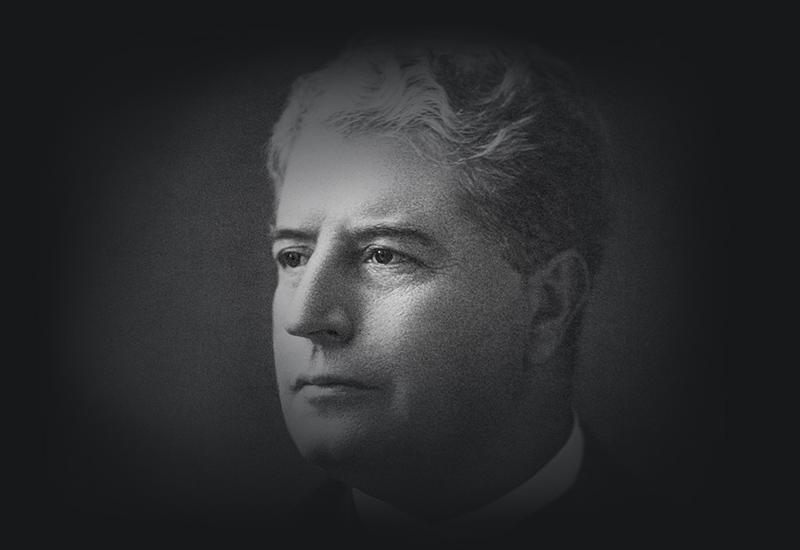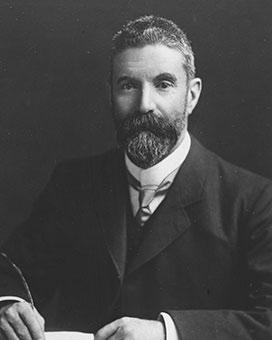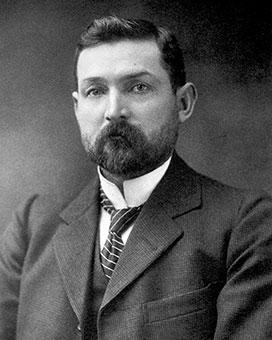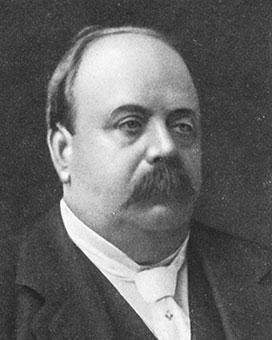The Judiciary Act became law on 25 August 1903 and, on 24 September, Prime Minister Edmund Barton resigned to accept appointment to the new High Court of Australia. On 5 October 1903, the Governor-General approved the appointment of Samuel Griffith, Edmund Barton and Richard O’Connor. The first sitting of the High Court took place the following day in the Supreme Court building in Melbourne.
During Barton’s 16 years on the bench of the High Court, relations between state and federal governments as defined by the Constitution were a major focus. Barton was briefly acting Chief Justice in 1911 during Sir Samuel Griffith’s absence in Britain. In 1915, when the Bartons were in Britain, Edmund Barton sat on the Privy Council.
The aim in drafting Chapter 3 of the Australian Constitution was to establish a supreme federal court not so much to deal with constitutional interpretation, but to provide a final court of appeal in Australia and abolish appeals to the British Privy Council on Australian matters. This aim was stalled by the British parliament’s amendment of the Constitution Bill to provide that appeals against decisions of the state supreme courts and the High Court could be heard by the judicial committee of the Privy Council.
Under a compromise reached in 1900, an appeal could go from a state supreme court to the High Court and, if the appellant wished, from there to the Privy Council; or an appeal could go from a state supreme court directly to the Privy Council. A 1907 amendment to the Judiciary Act prevented constitutional cases taking the ‘side door’ route from a State to the Privy Council, and ensured the High Court would make the final decision in interpreting the Australian Constitution.
On 7 January 1920, while holidaying at the Hydro Majestic Hotel at Medlow Bath in the Blue Mountains, Sir Edmund Barton died, aged 71.
An obituary in the Sydney Morning Herald stated ‘his work will last as long as Australia remains a nation’. However, Barton’s grave in Sydney’s South Head cemetery was forgotten until the 50th anniversary of Federation. The site was located after a local resident wrote to Robert Menzies about it, and on 9 May 1951, a wreath was laid there by William Hughes, the only living member of Australia’s first parliament.
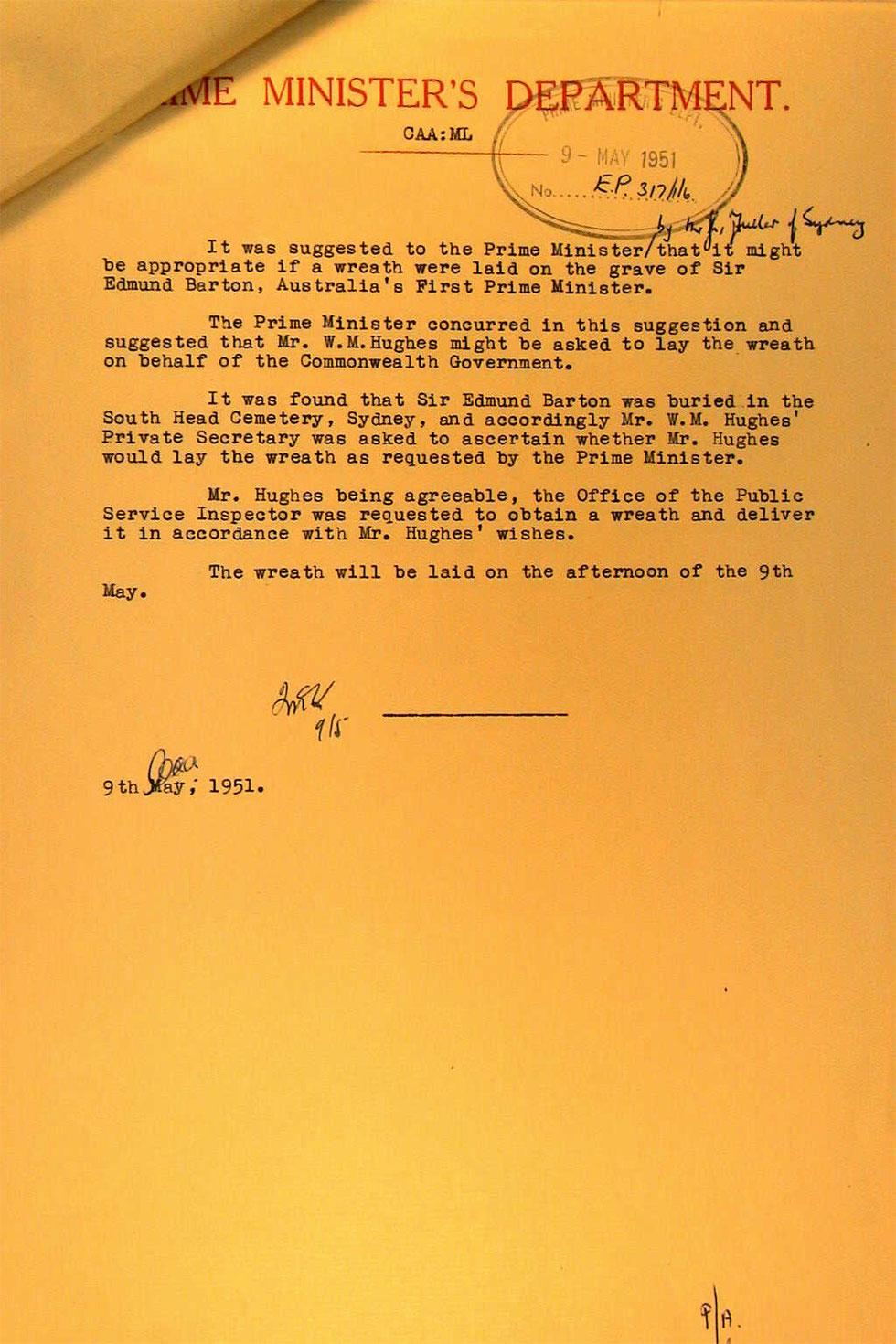
The 50th anniversary of the opening of Australia's first parliament was marked with a ceremony at the grave of Edmund Barton on 9 May 1951. NAA: A461, EP317/1/6, p.3
Sources
- Bolton, Geoffrey, Edmund Barton, Allen & Unwin, Sydney, 2000.
- Fricke, Graham, Judges of the High Court, Hutchinson, Melbourne, 1986.
From the National Archives collection
- Judges of the High Court, Appointment of Sir Edmund Barton (and arrangements for funeral) 1903–20, NAA: A432, 1950/484
- Commonwealth Jubilee celebrations 1951, Correspondence on laying a wreath on the grave of Sir Edmund Barton, NAA: A461, EP317/1/6

